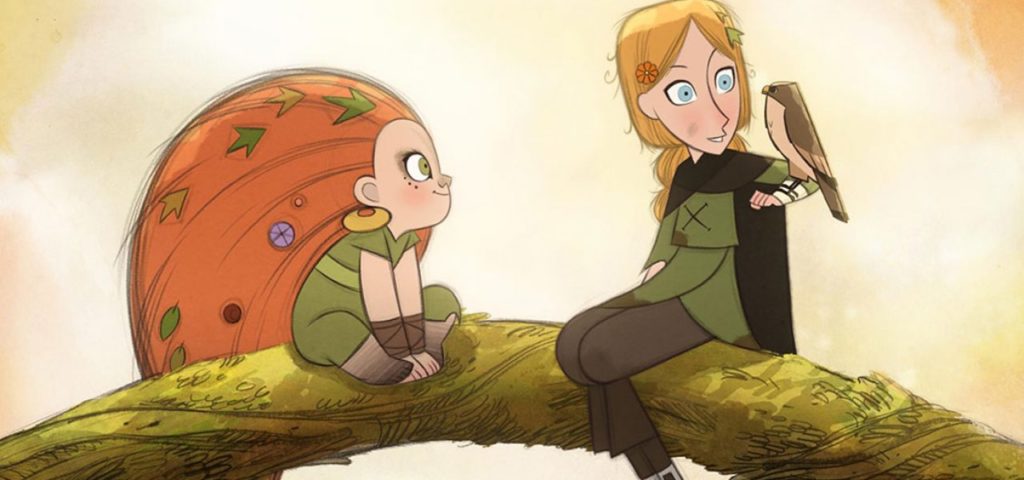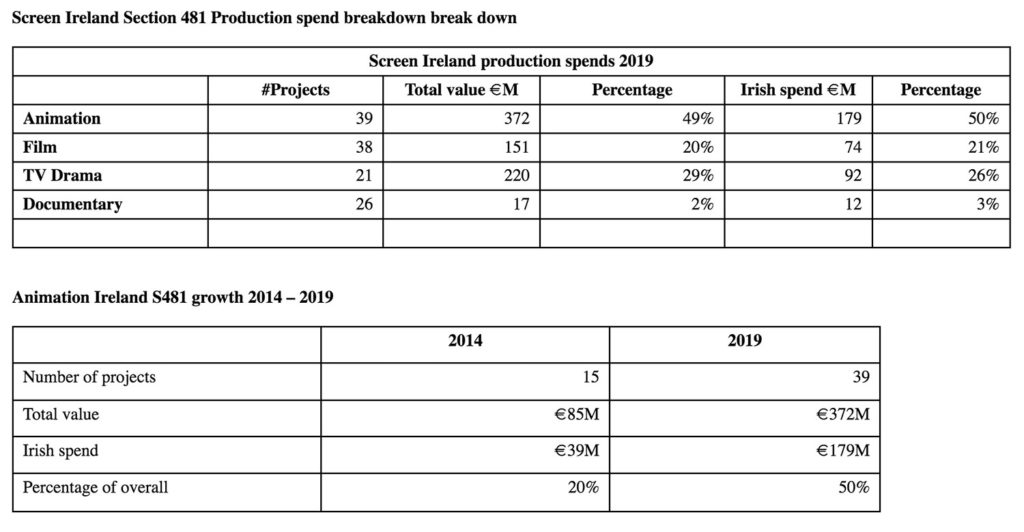
Finally, some good news. Half of all production spending in Ireland now goes toward animation, according to figures released today by Screen Ireland. The trade body based its calculations on projects that qualified for Section 481, the country’s film and tv tax relief, in 2019.
Relief was given to 39 animated projects with a total value of €372 ($403) million — 49% of all spending on film and tv. The Irish spending on those 39 projects was €179 million, or 50% of all Irish spending. These numbers represent a dramatic increase in animation production, in both absolute and relative terms. In 2014, relief went to 15 projects with a total value of €85 million — a mere 20% of overall spending in that year.
This news is heartening, but doesn’t comes as a great surprise to observers of Ireland’s mushrooming animation sector, which currently employs more than 2,000 people. The country is home to dozens of studios, including the globally renowned Cartoon Saloon, as well as Boulder Media and Brown Bag (which have been acquired by toy titan Hasbro and Canada’s 9 Story Media Group respectively).
Much of that growth is due to Section 481 itself, which is worth up to 32% of eligible Irish expenditure (37% in some regions). Speaking with Cartoon Brew, Ronan McCabe, chief executive of trade body Animation Ireland, also credits the country’s producers, who “just get out and about — they’re knocking on doors. At markets, at festivals, we’re always there, highly visible.” Then there’s the general talent and creativity, which translates into “awards like Emmys and Baftas… we’ve got a great reputation, so that obviously helps to generate new shows.”
McCabe points to feature-length productions as a relative weak spot — he says that the country produces one or two a year. Cartoon Saloon leads the pack: its three features to date, the most recent of which is 2017’s The Breadwinner, have all received an Oscar nomination. The studio is currently producing two more: Wolfwalkers for the new Apple TV+ streaming service, and My Father’s Dragon for Netflix.
In the past, the animation sector has raised concerns about how Section 481 is enforced: inadequate guidelines on the application process and the lack of distinction between animation and live-action production, to name two. (This article published by Animation Ireland has more.) “A lot of those difficulties seem to have been ironed out,” says McCabe. “Given the current crisis, and the support we’re getting from various stakeholders, it would be hard to pick on any of that stuff.”
The crisis is the elephant in the room here. Screen Ireland’s new figures refer to last year, before the coronavirus hit. The pandemic has disproportionately harmed the live-action sector globally, leading some to suggest that animation producers stand to benefit.
McCabe doesn’t see it that way: “There’s a well-connected ecosystem [between live action, animation, and vfx], so if it affects anybody, it affects us all.” He says he isn’t yet aware of a spike in the pitching of animated projects. That said, “the focus here has switched a little bit — there’s probably more [animation] development going on, more development funding. You know, just to make sure that the pipeline is full… But it’s too early to tell.”
Here is a breakdown of the Section 481 production spend:

(Image at top: Cartoon Saloon’s upcoming feature “Wolfwalkers.”)
